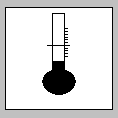| Cheese | [German version] |
Table of contents |
|
| General: | ||
| Product information | ||
| Packaging | ||
| Transport | ||
| Container transport | ||
| Cargo securing | ||
Product information
Product name
| German | Käse |
| English | Cheese |
| French | Fromage |
| Spanish | Queso |
| CN/HS number * | 0406 ff. |
(* EU Combined Nomenclature/Harmonized System)
Product description
Cheese is a dairy product, made from milk. According to the German cheese-making regulations, cheese is defined as „fresh products or products at varying degrees of ripeness which are made from coagulated cheese-making milk“.
Cheese production may be divided into the following stages:
| Curdling of the milk: curdling may also be known as milk coagulation. By adding substances which promote curdling (rennet, lactic acid bacteria), the protein and fat constituents are precipitated out of the milk. | |
| Curd formation: during curd formation, the liquid parts (whey) of the curdled milk are separated from the solid parts (curd). | |
| Ripening of the cheese: the cheese is ripened by the addition of microorganisms. |
The different varieties of cheese available number several thousand. They are classified according to the following criteria:
| milk used (e.g. cow’s, sheep’s, goat’s milk etc.) | |
| water content of the non-fat cheese solids | |
| curdling method | |
| fat content of the solids |
A small number of standard cheese varieties is listed below:
| Hard cheese: Emmental, Cheddar | |
| Soft cheese: Limburger, Brie, Camembert | |
| Slicing cheese: Gouda, Tilsit, Edam | |
| Semisoft slicing cheese: Butterkäse (a rich creamy cheese) | |
| Curd cheese: Quark, layered Quark | |
| Sour milk cheese: hand-formed curd cheese, Harz Mountain cheese |
Quality / Duration of storage
Cheese packaging must not display any depreciation-inducing defects caused by moisture/humidity (damp or wet spots), contamination or damage due to mechanical influences (tears). Damage in particular often creates a risk of maggot/larval infestation and mold growth.
No generally applicable statement can be made as to maximum duration of storage, as this varies depending on variety. The following Table merely constitutes a rough estimate:
| Designation | Temperature | Rel. humidity | Max. duration of storage | Source |
|---|---|---|---|---|
| Roquefort | 1 – 4°C | 85% | 4 weeks | [1] |
| Tilsit | 2°C | 90% | 4 months | [1] |
| Emmental | 10 – 12°C | 80 – 85% | 4 – 8 months | [1] |
| Gouda | 0 – 1°C | 80% | 4 months | [1] |
| Cheese, vacuum-packed | 2 – 4°C | not stated | approx. 6 months | [2] |
| Camembert | 2°C | not stated | 6 – 8 weeks | [19] |
| Cheddar | 0°C | not stated | several months | [19] |
| Emmental | 10 – 12°C | not stated | several months | [19] |
Intended use
Cheese is a very versatile foodstuff.
Figure
(Click on the Figure to enlarge it.)
 Figure 1 |
Countries of origin
This Table shows only a selection of the most important countries of origin and should not be thought of as exhaustive.
| Europe | Finland, Sweden, Denmark, Norway, Germany, Netherlands, France, England, Switzerland, Austria |
| Africa | |
| Asia | |
| America | Argentina |
| Australia | New Zealand |
Back to beginning
Packaging
The rind which surrounds a large proportion of cheese varieties is coated with a wax layer, to protect the cheese from contamination, mold, insects, light and water loss. Rindless cheese is sealed into plastic film in the unripe state, the film being so selected as to allow the cheese to ripen in it.
Most cheese varieties are packaged in plastic film or aluminum or tin foil. Cheese is primarily transported in cartons. The packaging size is so selected that the dimensions of the individual area modules or area module multiples are conformed to the conventional pallet sizes (800×1200 mm and 1000×1200 mm) and cargo units may thus be produced. Sometimes cheese is also transported in rolls, which are wrapped with paperboard and strapped with metal strapping. To protect it from theft and damage, cheese is also transported in mesh containers (lockable box pallets).
| Marking of packages | ||
 Keep dry |
 Keep away from heat (solar radiation) |
|
Back to beginning
Transport
Symbols
 General cargo |
 Temperature-controlled |
Means of transport
Ship, truck, railroad
Container transport
Refrigerated containers
Cargo handling
Since cheese is highly impact- and pressure-sensitive, appropriate care must be taken during cargo handling. Cheese in rolls must not be dropped or set down hard, as it could thereby lose its roundness.
It is also imperative that the goods be protected from moisture (rain, snow) during cargo handling and from excessively high temperatures. It is absolutely essential to comply with the specified refrigeration temperature.
Stowage factor
| 1.13 – 1.81 m3/t (cartons) [1] | |
| 2.80 m3/t (rolls) [1] | |
| 2.50 m3/t (cartons in mesh containers) [1] | |
| 1.48 – 1.62 m3/t (boxes) [11] | |
| 1.00 – 1.34 m3/t (cartons) [11] | |
| 1.56 – 2.00 m3/t (mesh containers) [14] | |
| 1.84 – 2.00 m3/t (cartons from New Zealand) [14] | |
| 1.56 m3/t (boxes from Argentina) [14] | |
| 2.00 – 2.26 m3/t (Camembert in boxes) [14] | |
| 1.84 – 2.00 m3/t (Edam in boxes) [14] |
Stowage space requirements
Cool, dry, well ventilated
Segregation
Synthetic fiber rope, thin fiber nets, matting, jute coverings, packing paper, tarpaulins, plastic film
Cargo securing
Because of its considerable impact- and pressure-sensitivity, packages of this cargo must be secured in such a way that they are prevented from damaging each other. Spaces between packages or pallets must be filled, to prevent slippage or tipping. By selecting the correct packaging size or cargo unit (area module or area module multiple), holds can be tightly loaded (without spaces).
Back to beginning
Risk factors and loss prevention
RF Temperature
Cheese requires particular temperature, humidity/moisture and ventilation conditions (SC VII) (storage climate conditions).
A written cooling order must be obtained from the consignor before loading is begun. This order must always be complied with during the entire transport chain.
No generally applicable statement can be made as to temperature due to the large number of varieties and their different characteristics.
The following Table merely constitutes a rough estimate of applicable temperature ranges:
| Designation | Temperature range | Source |
|---|---|---|
| Travel temperature (favorable temperature range) | ||
| Processed cheese | 5 – 7°C | [1] |
| Tilsit | 2°C | [1] |
| Edam | 3 – 5°C | [1] |
| Emmental | 10 – 12°C | [1] |
| Gouda | 0 – 1°C | [1] |
| Roquefort | 1 – 4°C | [1] |
| Feta | 2 – 6°C | [2] |
| Camembert | 2°C | [19] |
| Cheddar | 0°C | [19] |
| Emmental | 10 – 12°C | [19] |
| Curd cheese | 5°C | [19] |
If cheese is stored at excessively cold temperatures, its quality is degraded by drying-out, hardening, loss of aroma (ripening halts) and spoilage.
Excessively high temperatures trigger fermentation processes, which may cause the cheese to expand in volume and decompose. Acceptance of a consignment of prechilled cheese must therefore be effected quickly, as there is a risk of the cheese becoming overripe or melting if it becomes warm.
Temperature variations may cause the cheese to become crumbly.
Back to beginning
RF Humidity/Moisture
Cheese requires particular temperature, humidity/moisture and ventilation conditions (SC VII) (storage climate conditions).
| Designation | Humidity/water content | Source |
| Relative humidity | approx. 70 – 90% (depending on variety) | [1] |
| Water content | approx. 35% (hard and slicing cheese) approx. 50% (soft cheese, curd cheese, processed cheese) |
[1] |
| Maximum equilibrium moisture content | approx. 70 – 90% (depending on variety) | [1] |
Water content is very heavily dependent on variety. In general, it may be assumed that the harder the cheese, the less water it contains.
The cartons must be protected from all forms of moisture (seawater, rain and condensation water) and from excessive humidity levels. Typical patterns of moisture damage to a cargo are as follows:
| loose, mildewed, unattractive labels | |
| mold on and in cartons | |
| crushed cartons, due to moisture penetration, leakage, total loss |
Back to beginning
RF Ventilation
Cheese requires particular temperature, humidity/moisture and ventilation conditions (SC VII) (storage climate conditions).
Recommended ventilation conditions: circulating air, 15 – 20 circulations/hour; fresh air where required.
Inadequately ventilated cheese very rapidly succumbs to the risk of mold growth. In addition, drafts may cause losses in quality.
Back to beginning
RF Biotic activity
Cheese displays 3rd order biotic activity.
It belongs to the class of goods in which respiration processes are suspended, but in which biochemical, microbial and other decomposition processes still proceed.
Back to beginning
RF Gases
In the event of extended storage, some cheese varieties may evolve toxic gases. Therefore, before anybody enters the hold or container, it should be ventilated and a gas measurement carried out where necessary.
Back to beginning
RF Self-heating / Spontaneous combustion
No risk.
Back to beginning
RF Odor
| Active behavior | Depending on the variety, cheese exudes an odor which ranges from slight and pleasant to extremely unpleasant. Cheese should not therefore be stored together with other odor-sensitive foodstuffs, such as butter, lard and meat. Cheese must only be stowed together with fruit and vegetables with the consent of the consignor. Some cheese varieties should even be stowed separately from one another, so meaning that severe demands are made on the packaging in order to maintain quality. |
| Passive behavior | Some cheese is highly sensitive to foreign odors. |
Back to beginning
RF Contamination
| Active behavior | Cheese does not cause contamination. |
| Passive behavior | Cheese is sensitive to dust, dirt and fats/oils. Holds/containers must therefore be clean and in a thoroughly hygienic condition. Even slight soiling may give rise to objections. |
Back to beginning
RF Mechanical influences
Cheese is sensitive to pressure and impact loads. Improper handling or stowage may result in damage.
The packages must be secured appropriately in the hold or container so that they cannot move during transport. In the case of container transport, it is also important for the goods to be secured in the door area so that they cannot fall out of the container when the doors are opened.
Back to beginning
RF Toxicity / Hazards to health
In the event of extended storage, some cheese varieties may evolve toxic gases. Therefore, before anybody enters the hold or container, it should be ventilated and a gas measurement carried out where necessary.
Back to beginning
RF Shrinkage/Shortage
Loss of volume may be caused by breakage or theft.
Back to beginning
RF Insect infestation / Diseases
Open, damaged packaging frequently results very rapidly in drying-out and mold growth. Infestation by insect larvae may also occur. Fine tracks on the surface indicate cheese mites. The infested places are dry and crumbly.
Back to beginning
